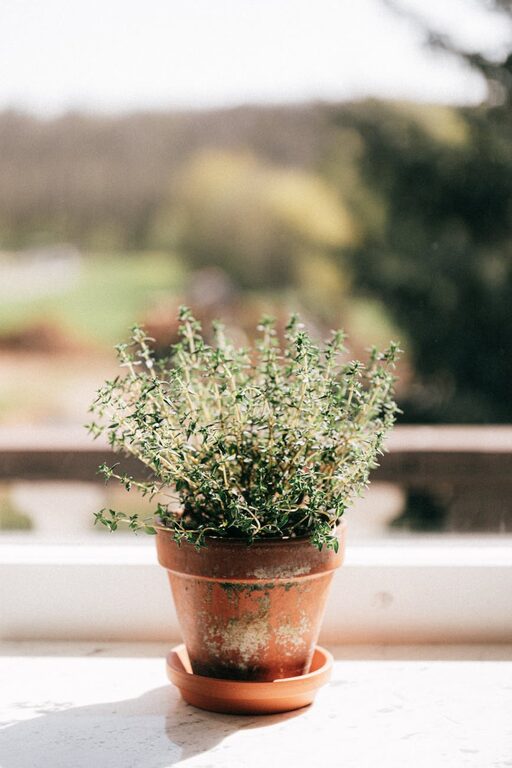Starting a small herb garden indoors is a rewarding way to have fresh, flavorful herbs at your fingertips, no matter the season. Whether you have a spacious kitchen or just a sunny windowsill, growing herbs inside is easier than you might think. This guide walks you through everything you need to know to get your indoor herb garden up and thriving.
Why Grow Herbs Indoors?
Indoor herb gardening offers several benefits:
– Fresh herbs for cooking anytime
– Natural air fresheners and greenery for your home
– A fun and educational hobby
– Saves money compared to buying fresh herbs regularly
Choosing the right herbs and providing appropriate care will help you enjoy the convenience and satisfaction of homegrown flavors.
Choosing the Best Herbs for Indoor Growing
Not all herbs thrive indoors equally well. For beginners, consider herbs known for being hardy and low maintenance:
– Basil: Loves warmth and light, perfect near a sunny window
– Mint: Grows quickly, but can be invasive, so keep it in its own pot
– Parsley: Tolerates partial shade, needs consistent moisture
– Chives: Compact and easy to grow with minimal effort
– Thyme: Prefers bright light and well-drained soil
Pick herbs you use frequently in your cooking to make the most of your garden.
Selecting the Right Containers and Soil
Containers
Choose pots with drainage holes to prevent waterlogging, which can cause root rot. You can use individual pots for each herb or a larger container divided into sections. Consider these options:
– Clay or terracotta pots for natural breathability
– Plastic pots for lighter weight and moisture retention
– Recycled containers with adequate drainage holes
Soil
Herbs generally prefer well-draining soil. Use a high-quality potting mix designed for indoor plants or herbs. Avoid garden soil, which can be too dense and may contain pests.
Finding the Ideal Location
Herbs need adequate light to grow healthy and flavorful. Most herbs require 6-8 hours of sunlight daily. Here’s how to find the right spot indoors:
– A south-facing window is usually best, providing the most consistent light
– East or west windows can also work, but ensure herbs don’t get scorched by direct afternoon sun
– If natural light is limited, consider using grow lights. LED grow lights are energy efficient and effective
Rotate your plants every few days to promote even growth on all sides.
Planting Your Herb Garden
Starting from Seeds
If you choose to start from seeds:
- Fill your pots with moist potting mix
- Sow seeds according to the packet instructions—usually about ¼ inch deep
- Cover lightly with soil and mist gently with water
- Place the pots in a warm, sunny location
- Keep the soil moist but not soggy until seeds germinate
Starting from Seedlings or Cuttings
Using seedlings or cuttings can be quicker than starting from seed:
– Purchase healthy seedlings from a nursery
– Gently loosen roots before planting in your pots
– For cuttings, place stems in water until roots develop, then plant in soil
Caring for Your Indoor Herbs
Watering
– Check soil moisture regularly—water when the top inch feels dry
– Avoid overwatering; soggy soil can harm roots
– Use a spray bottle to mist leaves if indoor air is dry
Fertilizing
– Use a balanced liquid fertilizer diluted to half strength every 4-6 weeks
– Avoid over-fertilizing which can reduce flavor quality
Pruning
– Regularly pinch or snip off herb tips to encourage bushier growth
– Harvest before plants flower for the best flavor
Pest Management
– Watch for common indoor pests like aphids or spider mites
– Wipe leaves with a damp cloth and use mild insecticidal soap if necessary
Troubleshooting Common Issues
– Yellow leaves: Could indicate overwatering or lack of nutrients
– Leggy plants: Often a sign of insufficient light; move closer to a window or use grow lights
– Wilting: May mean underwatering or root problems
– Slow growth: Check if the plant is getting enough light, water, and fertilizer
Enjoying Your Indoor Herb Garden
Use your fresh herbs to enhance salads, soups, teas, and more. Growing your own herbs adds a touch of nature indoors and brings joy to meal preparation. Plus, sharing your success with friends can inspire others to start their own indoor garden!
Final Tips
– Start small and expand as you get comfortable
– Keep a journal of planting dates, watering schedules, and harvest times
– Experiment with different herbs and combinations
– Remember, patience and consistency are key to a flourishing garden
Growing a small herb garden indoors is a simple, enjoyable way to brighten your home and your cooking. With these easy steps, you’re ready to nurture your own fresh herbs all year long. Happy gardening!

